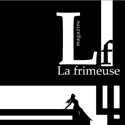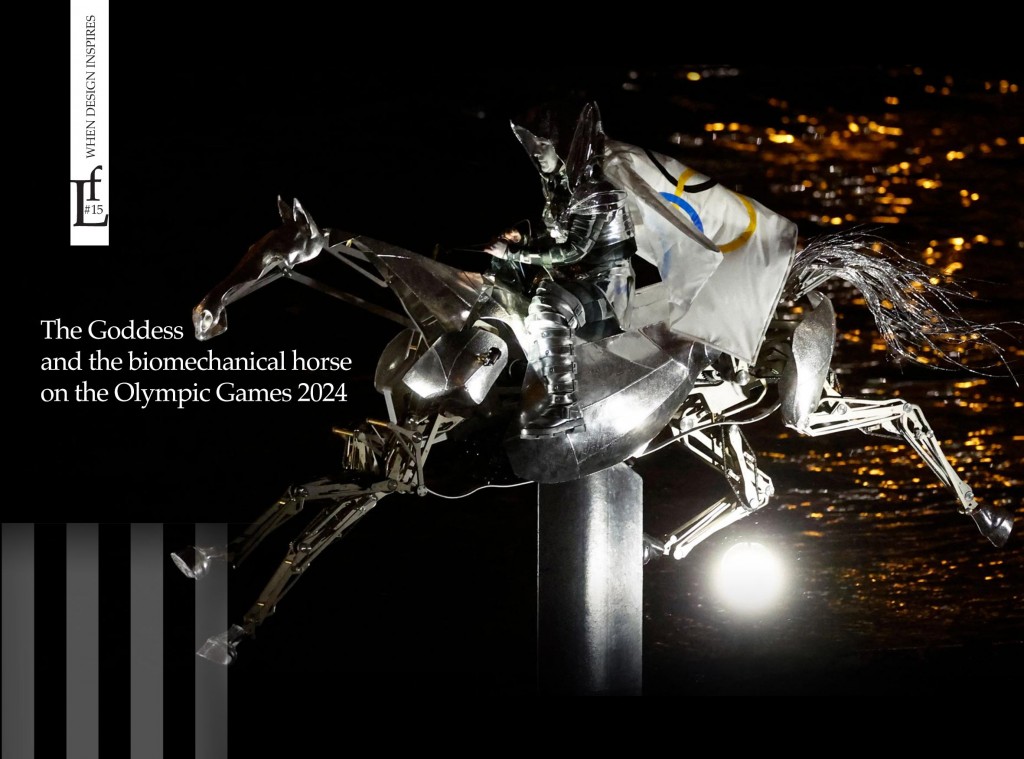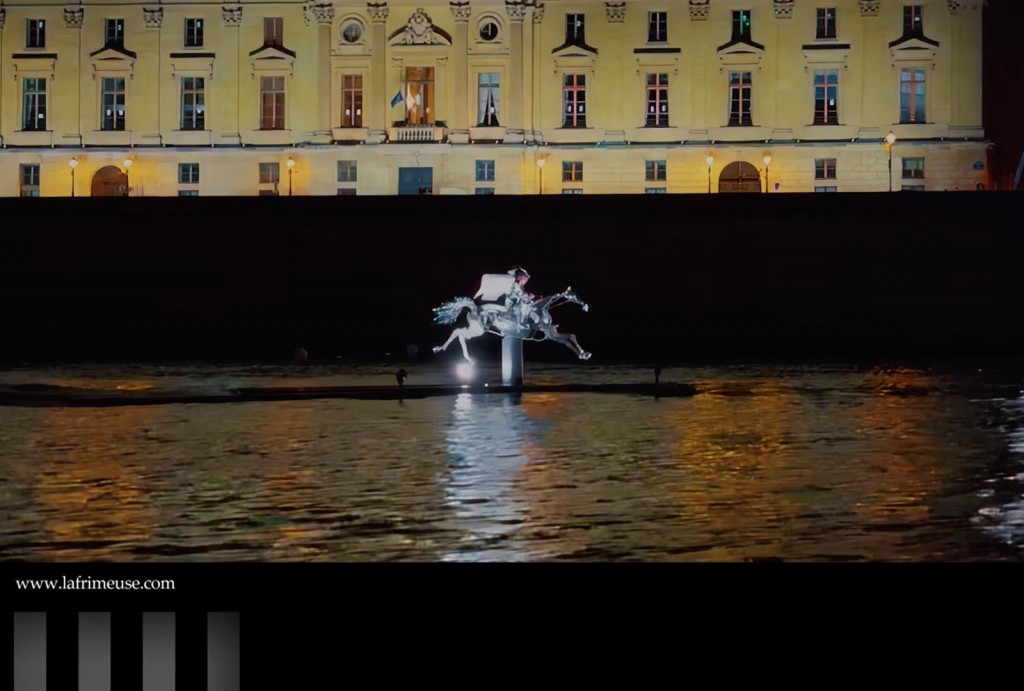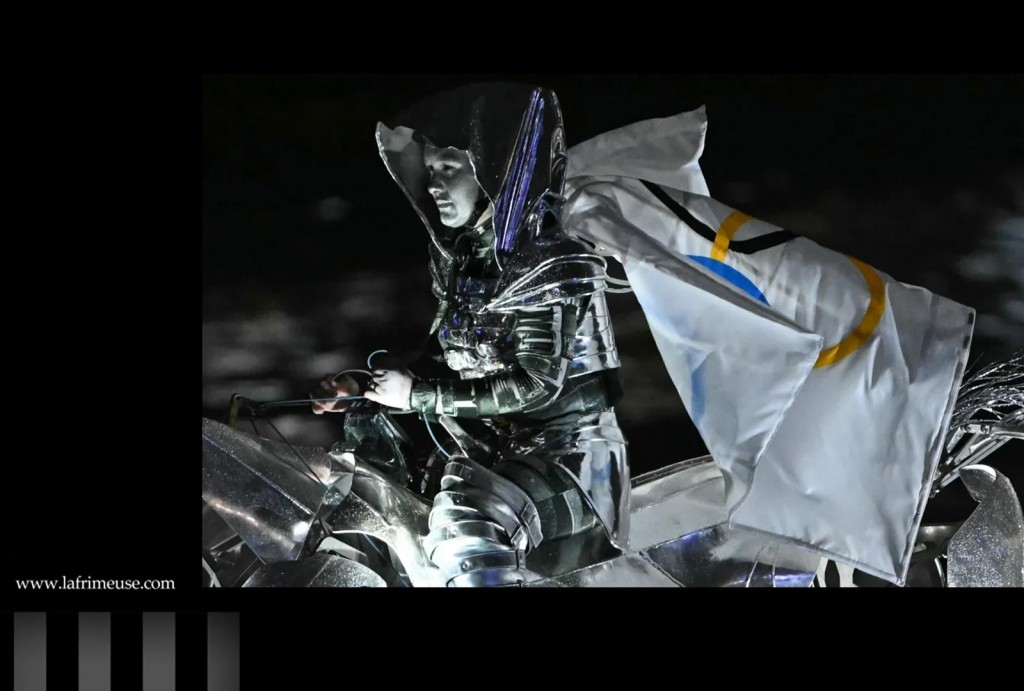The opening ceremony of the 2024 Olympic Games was controversial, but it was certainly not boring. The episode with the appearance of the goddess Sequana, The Seine is named after Sequana, the goddess of water in Gallo-Celtic mythology, caused mixed impressions. Let’s figure it out? The ancient Gauls considered the lands around the source of the Seine sacred, and the Romans continued this cult, elevating the river to the status of a deity. And this is not Joan d’Arc or Death from Dürer’s engraving, as some social media users assumed, based on the degree of their imagination. This is the creation of a group of designers, a mechanical horse, a creation of Atelier Blam.
Working at the intersection of architecture and design, Atelier Blam specializes in the development and production of complex technical and artistic devices. Its area of expertise combines several scales and professions; from architecture to engineering, including artistic interventions and site-specific installations. 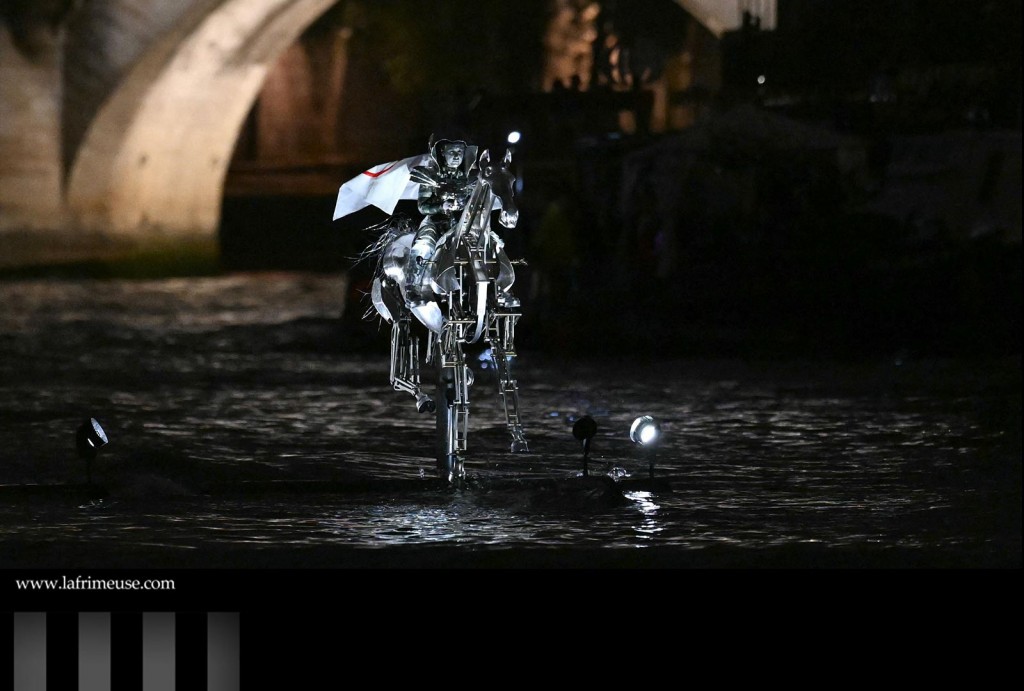 In an interview given to the Design Boom portal, one of the founders, Aurelien Meyer, described himself as follows: “We are influenced by different fields. In our team, we have architects, engineers and designers who bring many different skills and enrich our discourse – from aesthetics to the technical production of the object. I studied fine arts, but later worked for a large company in France that makes machines for public spaces, and that’s how I got interested in mechanical engineering.” Bruno Lemunier: Co-founder of the studio “I have a background in mechanical and naval architecture, and I have been working in this field for some time. It is different from art and design, but these fields have much in common – they all embody the act of moving from design to realization. A few years ago, Aurélien and I started working in the same company, and later founded Atelier Blam.”
In an interview given to the Design Boom portal, one of the founders, Aurelien Meyer, described himself as follows: “We are influenced by different fields. In our team, we have architects, engineers and designers who bring many different skills and enrich our discourse – from aesthetics to the technical production of the object. I studied fine arts, but later worked for a large company in France that makes machines for public spaces, and that’s how I got interested in mechanical engineering.” Bruno Lemunier: Co-founder of the studio “I have a background in mechanical and naval architecture, and I have been working in this field for some time. It is different from art and design, but these fields have much in common – they all embody the act of moving from design to realization. A few years ago, Aurélien and I started working in the same company, and later founded Atelier Blam.”
The designers created not just a spectacular attraction, a biomechanical horse that completely recreates the gallop of a real animal, but also a unique art object, and the fact that it was part of the show at the opening of the Olympics, where the achievement of human physical resources will be shown, this also does not exclude the presentation of the intellectual capabilities of man as a creator. The horse is equipped with a floating system, created specifically for the needs of the opening ceremony by ship architects from Quiberon. The mechanism deciphers the movements of a horse gallop as accurately as possible.
Before the mechanical horse, Atelier Blam had already distinguished itself with its previous prestigious creations, such as the fountains on the Champs Elysees or the interior furniture of the Bourse de Commerce – Pinault Collection in Paris.
But who was the creator of the costume worn by Florian Isser, a non-commissioned officer of the National Gendarmerie, who played the goddess who brought the flag to the Olympic athletes? This leather armor is by 29-year-old French designer Jeanne Friot, founder of a gender-neutral clothing brand. “I like to turn a belt, a utilitarian object, into a piece of jewelry. Creating a garment by joining belts together is like creating armor, like a second skin.” 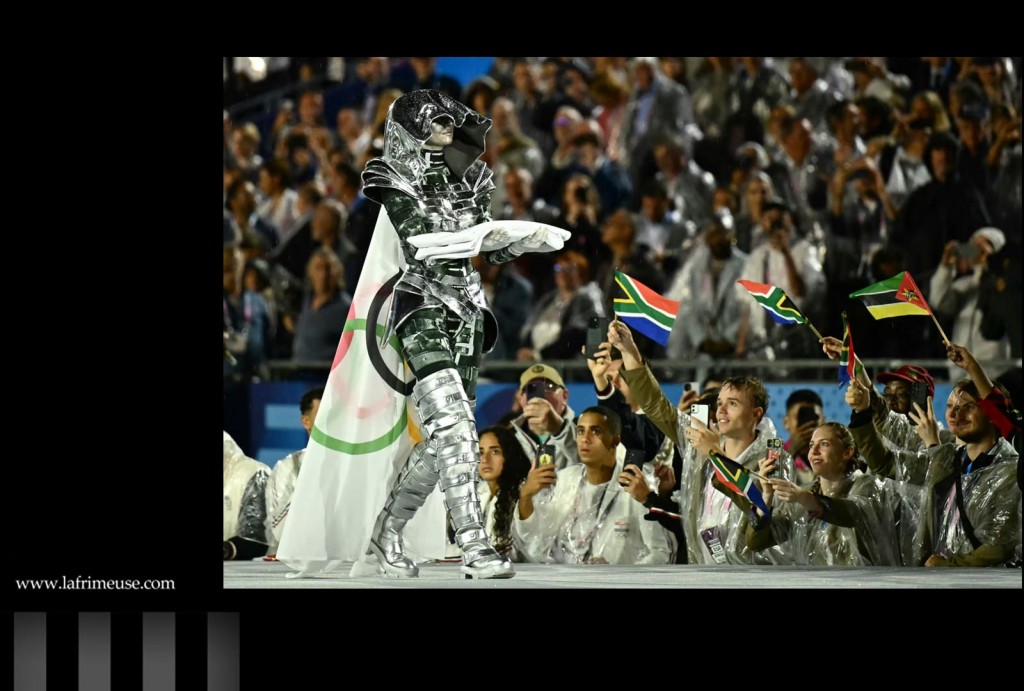 Under the leather armor, cut from metallic leather sourced in Italy, Friot designed a padded bodysuit to create a trompe-l’oeil effect of crisscrossing straps. “The whole thing had to be adjustable with removable parts to accommodate riding safety, as well as practical needs like bathroom breaks for the riders who would be wearing them for hours,” she explained. The look was completed with articulated thigh-high vegan leather boots.
Under the leather armor, cut from metallic leather sourced in Italy, Friot designed a padded bodysuit to create a trompe-l’oeil effect of crisscrossing straps. “The whole thing had to be adjustable with removable parts to accommodate riding safety, as well as practical needs like bathroom breaks for the riders who would be wearing them for hours,” she explained. The look was completed with articulated thigh-high vegan leather boots. 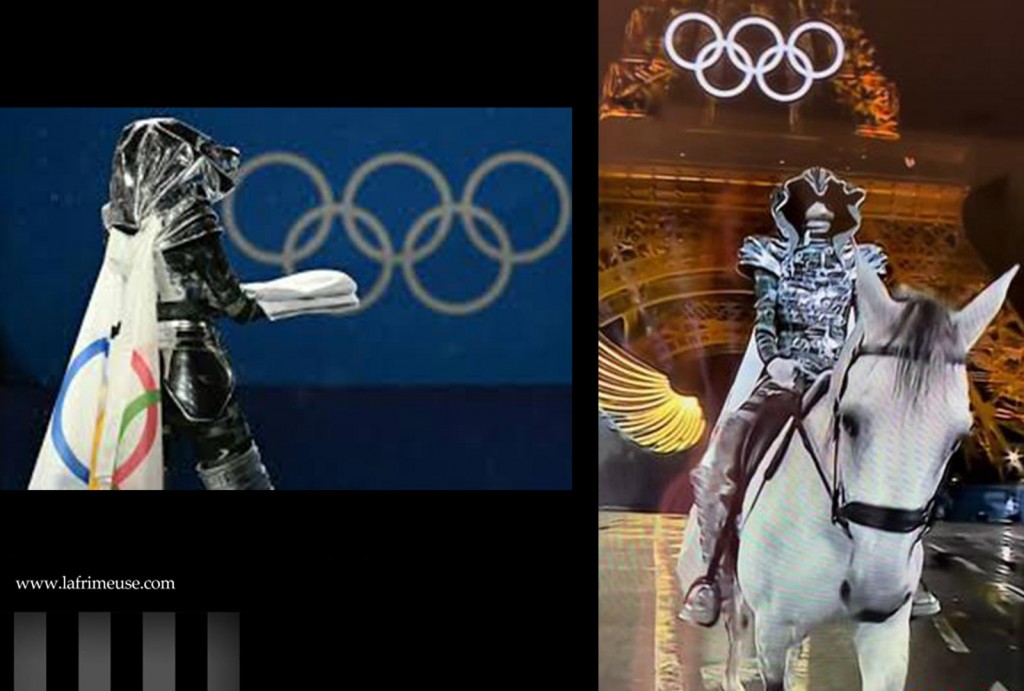 The appearance of the mysterious horsewoman on the waters of the Seine was one of the many unique episodes of the original script, and it was not just a show, a theatrical or even an art conceptual performance, if you like, yes, there are many controversial moments, but as the artistic director and creator of this ceremony Thomas Jolly put it, but in this show everyone was represented.
The appearance of the mysterious horsewoman on the waters of the Seine was one of the many unique episodes of the original script, and it was not just a show, a theatrical or even an art conceptual performance, if you like, yes, there are many controversial moments, but as the artistic director and creator of this ceremony Thomas Jolly put it, but in this show everyone was represented.
When the first emotions pass and it will be possible to analyze this performance without prejudice, then we will probably be able to evaluate it as a whole, as the transformation of the historical center of the metropolis, whose cultural share belongs to the whole world, into a huge stage, mixing everyone and participants and spectators, guests and residents.
Let’s distract ourselves from the search for hidden negative meanings, and let’s first of all be inspired by creative ideas and solutions.
